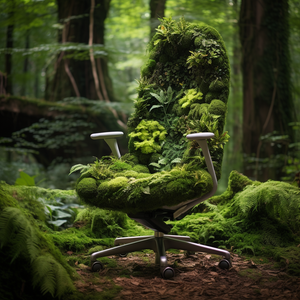Introduction
In our rapidly evolving world, where ecological concerns loom larger by the day, making sustainable choices has become a moral imperative for both individuals and businesses. Amidst the myriad of decisions companies make daily, one might be surprised at the environmental impact of choosing office furniture. This article dives deep into why opting for used office furniture isn't just an economical decision but a green one.
The Environmental Cost of New Furniture
-
Materials: The allure of new, gleaming office furniture often masks the environmental costs behind its production. A significant chunk of new furniture is made from wood—wood that often comes at the expense of our planet's lungs: forests. Deforestation not only threatens biodiversity but also accelerates global warming. Additionally, the extraction and processing of metals and the production of plastics, common in modern office furniture, strain our natural resources.
-
Manufacturing: The production process of new furniture is energy-intensive. This energy consumption, especially if derived from non-renewable sources, leads to increased greenhouse gas emissions. Moreover, waste by-products from furniture manufacturing, if not properly managed, further contribute to environmental degradation.
-
Transport: Shipping new furniture, particularly when imported, leaves a sizable carbon footprint. The longer the journey, the greater the environmental impact, not to mention the packaging waste associated with protecting new furniture during transit.
Benefits of Choosing Used Furniture
-
Less Waste: Every piece of used furniture bought is a piece saved from potentially ending up in a landfill. In many parts of the world, large furniture items can be especially challenging to recycle, leading to wasteful disposal methods.
-
Conservation of Resources: When you opt for used furniture, you're essentially reducing the demand for new resources. This means fewer trees felled, less mineral extraction, and reduced energy usage for production.
-
Reduced Energy Consumption: A simple yet profound truth is that no additional energy is used in the production of used furniture—it's already been made.
-
Economic Benefits: While this article's focus is on environmental aspects, it's worth noting that buying used is often significantly cheaper. This cost-effectiveness means that businesses can allocate funds to other sustainable initiatives.
The Quality Argument
Built to Last: Office furniture that is of lesser quality will not last more than 4-5 years. No one who is in used office furniture trade will touch such items. Poor quality is a lot of headache for both buyers and dealers. As a second hand office furniture dealer with decades of experience we know which brands and models pass the test of time. And we simply don't acquire furniture that doesn't. Therefore it is very rare to find products from the big, blue, Swedish store or no-name Chinese "brands" in pre-owned office furniture warehouses.
The Bigger Picture
-
Supporting a Circular Economy: Every time a business opts for used furniture, it's a vote for a more circular economy. In this system, products are not just discarded after use but are reused, repaired, and recycled. This model drastically reduces the need for virgin resources and promotes sustainability.
-
Community Support: Often, used office furniture is sourced from local sellers or community-driven initiatives. By choosing used, businesses are not only making a green choice but also supporting their local community and economy.
Conclusion
Choosing used office furniture is more than just a financial decision—it's a commitment to sustainability, a nod to quality craftsmanship, and a step towards a greener planet. As businesses, and as consumers, our purchasing decisions carry weight. Let's ensure that the weight doesn't burden our planet but instead paves the way for a sustainable future.

